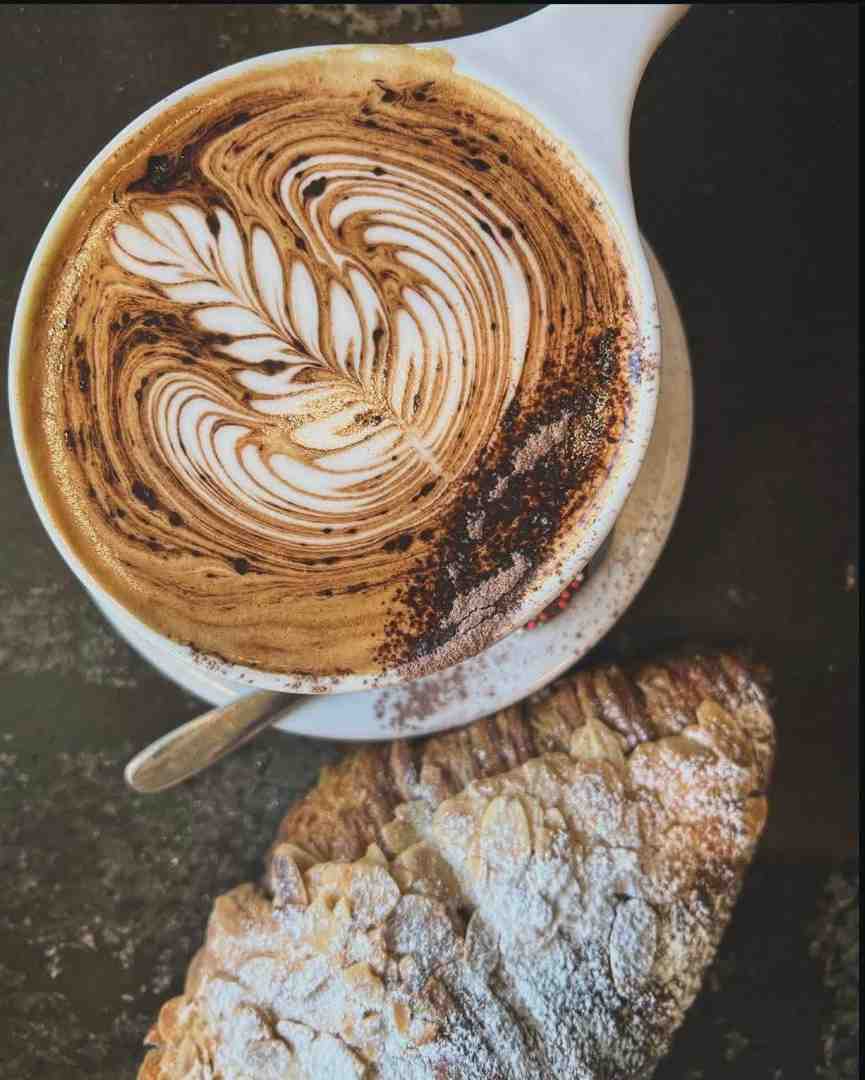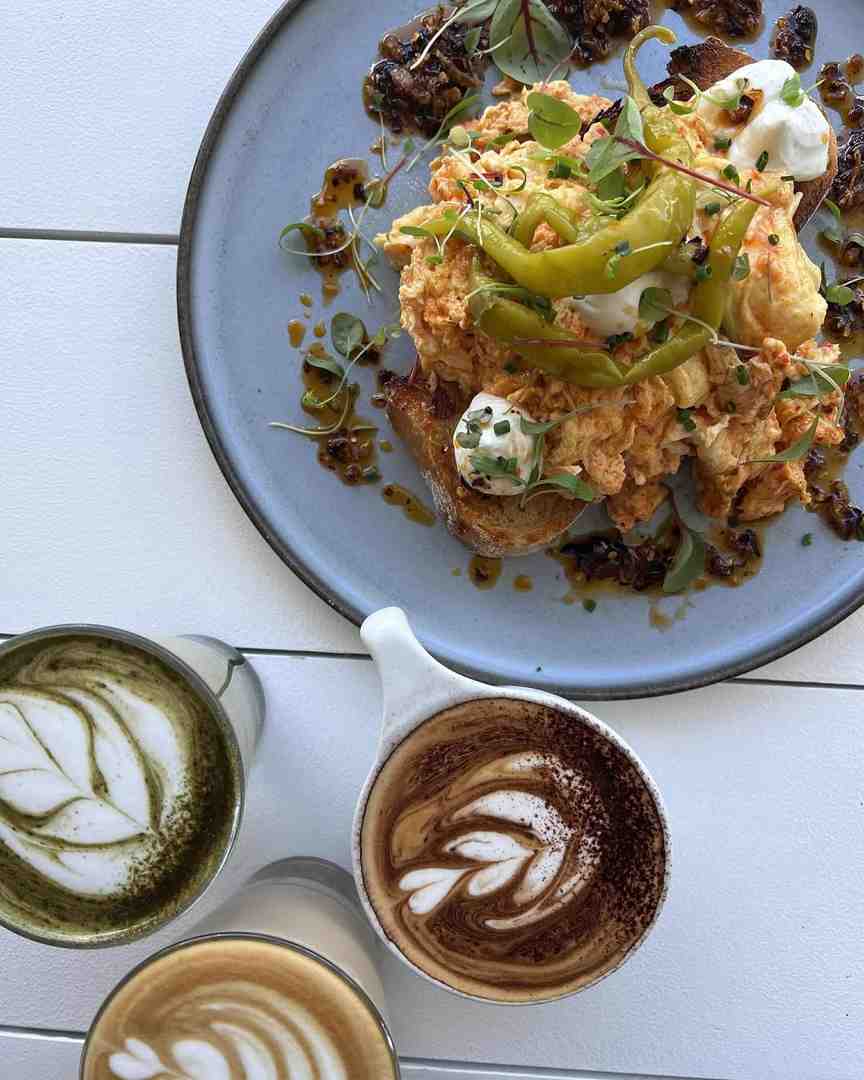Beginner's Guide to the Difference Between Flat White, Latte, and Cappuccino

Explaining Coffee Choices
Ever found yourself staring at a café menu, wondering what actually sets a flat white, latte and cappuccino apart? You’re definitely not the only one. These espresso-based classics might seem similar at a glance, but there’s a bit of coffee science behind each one—and once you know what to look for, it’s easy to tell them apart.
It all comes down to the ratio of espresso, steamed milk, and foam—plus a few subtle differences in texture and flavour.
A flat white, for example, gives you that stronger coffee hit with a silky layer of microfoam. A latte is milkier, creamier, and a little more mellow—perfect if you’re after something smooth and comforting. But if you like your coffee frothy with a bit more punch, a cappuccino should be your go-to. It’s rich, bold, and often topped with a dusting of chocolate for that extra kick.
In a nutshell, the key differences come down to three factors:
- Milk-to-espresso ratio - Flat whites have the highest coffee concentration, lattes are milkiest
- Foam thickness - Cappuccinos have the most foam, flat whites the least
- Texture - Flat whites use microfoam throughout, cappuccinos have distinct foam layers
I'm Janice Kuz, owner of Flinders Lane Café, where understanding what's the difference between a flat white, latte and cappuccino has been central to our coffee program for over two decades in the hospitality industry.

A Quick Sip Through History
The cappuccino has ancient roots, dating back to early 19th century Vienna where it was known as "Kapuziner" – named after the Capuchin monks whose brown hooded robes matched the drink's color. By the 1950s, the perfect balance of espresso, steamed milk, and thick foam had become a cornerstone of Italian coffee culture.
The latte (or 'caffè latte' in Italian, meaning 'coffee with milk') has an interesting twist. While Italians had been enjoying milk with coffee for generations, the modern latte actually found its footing in America as a gentler introduction to espresso culture.
The flat white emerged during the coffee renaissance of the 1980s in Australia and New Zealand. Its exact birthplace remains contested – Sydney café owner Alan Preston claims to have served the first "official" flat white in 1985, while baristas from Wellington insist they were crafting them around the same time.
Why Origins Matter to Flavour Profiles
These geographical beginnings have influenced the beans and roasts we use today.
Italian coffee culture accepts darker roasts with bold, chocolatey notes that stand up beautifully to milk in traditional cappuccinos and lattes.
The flat white, born during the specialty coffee movement in Australia and New Zealand, often shines with medium roasts that showcase more complex flavour notes. At Flinders Lane Cafe, we've found that delicate Central American or African beans work wonderfully in flat whites, while South American or Southeast Asian beans with deeper profiles hold their own in lattes and cappuccinos.
What's the Difference Between a Flat White, Latte and Cappuccino?

Let me take you through these three beloved espresso drinks. While they might look similar, each has its own personality.
Flat White
The flat white is bold and velvety. Served in a petite 5-6oz ceramic cup, it packs a punch with its double shot of espresso. What makes it special is the silky microfoam integrated throughout with just a whisper of visible foam on top (about 0.5-1cm).
With roughly a 1:2 espresso to milk ratio, you'll taste the strongest coffee flavour of the trio. The mouthfeel is luxuriously smooth – what many baristas describe as "liquid velvet."
Latte
The gentle giant of coffee drinks, a latte comes in a more generous 8oz+ cup. While it may contain a single or double shot of espresso, what defines a latte is its abundance of steamed milk topped with a modest 1-2cm layer of foam.
With an approximate 1:3 or 1:4 espresso to milk ratio, the latte offers a milder, creamier experience with distinct layers from foam to milk to espresso.
Cappuccino
The cappuccino is coffee's classic three-layer delight. Traditionally served in a 5-6oz cup, it follows the golden ratio of 1:1:1 – equal parts espresso, steamed milk, and foam. That generous 2-4cm foam layer gives cappuccinos their distinctive character.
The medium-strong coffee flavour balances beautifully with the pronounced airy texture. Many cafés honor tradition by dusting the foam dome with cocoa powder.
Ordering with Confidence
Understanding what's the difference between a flat white, latte and cappuccino will help you communicate clearly with your barista:
For a flat white, simply ask for a "small flat white" to ensure you get the proper 5-6oz serving with minimal foam.
With lattes, size is more flexible, but you might specify if you're looking for a smaller, stronger version.
For cappuccinos, you can explore options like "wet" (less foam) or "dry" (more foam) depending on your texture preferences.
At Flinders Lane Cafe across our Sunshine Coast locations, we love helping you find your perfect cup.
Milk Science, Texture & Latte Art

The secret to beautiful latte art lies in perfectly steamed milk with the right texture.
When we steam milk, we're performing food science magic. As milk heats, its proteins unfold and reorganize ("denaturation"), creating that naturally sweeter taste and luxurious mouthfeel. Simultaneously, we introduce tiny air bubbles that get trapped by the milk's fat and protein.
What's the difference between a flat white, latte and cappuccino? It largely comes down to bubble size and quantity:
- Microfoam for flat whites and lattes – tiny, almost invisible bubbles creating silky, velvety texture
- Macrofoam for cappuccinos – larger, fluffier bubbles creating that distinctive airy top layer
We find that 65°C (150°F) hits the sweet spot for temperature – warm enough for sweetness without scalding.
Steaming Techniques for Each Drink
For a flat white, we keep the steam wand just below the surface for only 2-3 seconds before creating a whirlpool effect. We aim for 20-25% volume increase and just a whisper of microfoam.
When making a latte, we keep the wand at the surface longer (3-5 seconds) before creating that whirlpool. The goal is 25-35% volume increase with about a centimeter of silky microfoam.
For a cappuccino, we keep the wand at the surface even longer (5-8 seconds) while maintaining the whirlpool motion. We're looking for 30-50% volume increase with 2cm+ of foam.
Alternative Milks & Dietary Tweaks
Different plant-based milks create different experiences in your cup:
Oat milk is the superstar alternative, creating a creamy texture remarkably similar to dairy with natural sweetness. It works wonderfully in all three drinks.
Almond milk brings a lighter body and distinctive nutty flavour. It's trickier to foam for cappuccinos but creates lovely lattes.
Soy milk has good protein content that helps create stable foam, though it can occasionally separate with very hot espresso.
For calorie-conscious coffee lovers: a whole dairy milk flat white contains around 140 calories, skim milk drops that to about 90, oat milk sits at 120-130, while almond milk offers the lightest option at 50-70 calories.
Research suggests coffee contains beneficial antioxidants, and pairing it with the right milk lets you enjoy these benefits guilt-free.
Taste, Strength & Nutrition Facts
Each of these coffee favorites delivers a unique flavour experience.
A flat white offers the boldest coffee experience with its higher coffee-to-milk ratio. You'll notice more pronounced espresso characteristics and brighter acidity balanced by milk's natural sweetness. Caffeine-wise, you're typically getting about 128-136mg from that double shot, with around 110-180 calories in a standard 5-6oz serving with whole milk.
The latte provides a gentler approach with its higher milk content creating a milder, more approachable flavour where milk's sweetness takes center stage. Expect between 64-136mg of caffeine (depending on single or double shot), with approximately 190-210 calories in a typical 12oz serving with whole milk.
The cappuccino sits between its siblings in flavour intensity, offering a textural journey from pillowy foam to rich espresso. A traditional cappuccino typically contains 64-68mg of caffeine from its single shot, with about 120-130 calories in a standard 6oz serving with whole milk.
Health-Conscious Choices
Switching to skim milk can reduce calories by about 30-40% without dramatically changing texture. Plant-based alternatives offer another path, with unsweetened almond milk adding only about 30-50 calories per cup. Size matters too – a traditional 6oz flat white or cappuccino naturally contains fewer calories than a larger latte.
Coffee itself brings more than just flavour and caffeine. Research has found that a single cup can contain over 1,000 antioxidants, plus Vitamin B3 and polyphenols that may offer health benefits according to scientific research.
Sustainability & Bean Selection
At Flinders Lane Cafe, we carefully select beans that taste exceptional and are ethically sourced. Different beans shine in different drinks – delicate Central American or African beans work well in flat whites, while bold South American or Southeast Asian beans help the coffee stand out in milk-heavy lattes.
Freshness is non-negotiable for exceptional coffee. Beans reach their flavour peak just 7-14 days after roasting, which is why we partner with local roasters across the Sunshine Coast.
This commitment to quality is part of what makes our brunch experience special.
Brewing & Ordering Like a Pro
Making the perfect coffee at home or ordering confidently at a café ensures you'll get your ideal cup every time.
For home brewing, your equipment determines your approach. An espresso machine gives you the authentic experience, while a stovetop Moka pot or AeroPress can create respectable alternatives.
Key details for success include using a fine grind for espresso machines and a medium-fine grind for Moka pots. Keep water temperature between 90-96°C (195-205°F) and pre-heat your cups before serving.
For milk, aim for 60-65°C (140-150°F) for flat whites and lattes, while cappuccinos can go slightly higher at 65-70°C (150-160°F).
Café terminology can be confusing, especially between chain coffee shops and specialty cafés. What's the difference between a flat white, latte and cappuccino at Starbucks versus your local roaster? Quite significant! At Starbucks, a "flat white" comes in sizes up to 20oz – far from the traditional 5-6oz serving that most coffee professionals consider proper.
Step-by-Step Home Recipes
For a perfect flat white, pull a double shot of espresso into a small 5-6oz cup. Steam 4-5oz of milk, introducing air for only 2-3 seconds. Create a whirlpool effect while steaming, then tap the pitcher gently and swirl to eliminate large bubbles. Pour steadily into the center of your espresso, aiming for a thin 0.5cm layer of silky microfoam.
For a lovely latte, pull your espresso into a larger 8oz+ cup. Steam 6-8oz of milk, introducing air for 3-5 seconds. Pour steadily, aiming for about 1cm of foam to finish.
For a classic cappuccino, pull a single shot into a 5-6oz cup. When steaming milk, introduce air for 5-8 seconds. Pour the liquid milk first, then spoon the thicker foam on top, creating a 2-4cm layer. A light dusting of cocoa powder adds a traditional touch.
Barista-Approved Ordering Tips
When ordering, clear communication helps you get exactly what you want:
- Specify cup size by asking for a "small" or "traditional" flat white or cappuccino
- For stronger flavour, request a double shot of espresso
- Express your foam preference ("light foam" or "extra foam")
- Be specific about milk alternatives (oat, almond, soy)
- Consider temperature by asking for your drink "not too hot"
Here at Flinders Lane Cafe across the Sunshine Coast, our baristas take pride in ensuring you get exactly the coffee experience you're looking for.
Frequently Asked Questions about Flat White, Latte, and Cappuccino
Does a flat white always have more caffeine than a latte?
This is a common misconception! Caffeine content isn't determined by the style of coffee drink, but by how many espresso shots are used.
Traditionally, a flat white is made with a double shot of espresso (containing about 128mg of caffeine), while a latte might be made with either a single shot (64mg) or double shot (128mg) depending on the café. If both drinks contain the same number of espresso shots, they'll have identical caffeine content.
Flat whites taste stronger because they have less milk diluting the espresso flavour, not because they contain more caffeine.
Which drink is best for latte art beginners?
If you're just starting your latte art journey, reach for the latte! There's a reason it's called "latte art" and not "flat white art" or "cappuccino art."
The latte provides the most forgiving canvas thanks to its larger surface area and thinner layer of microfoam. This gives you more room for error and a slower flow when attempting those first designs.
Flat whites require more precision due to their smaller size, while cappuccinos' thick foam layer isn't conducive to creating intricate designs.
How does oat milk change the mouthfeel of each beverage?
Oat milk creates a noticeably creamier, slightly sweeter version of each coffee drink compared to dairy milk.
In flat whites, oat milk's natural sweetness beautifully complements the espresso intensity. The microfoam might be slightly less velvety than perfectly steamed dairy, but many customers actually prefer the richer mouthfeel.
For lattes, oat milk transforms the drink into something almost dessert-like – rich and satisfying with a subtle sweetness that pairs wonderfully with the mild coffee flavour.
With cappuccinos, oat milk can create a surprisingly stable foam, though typically not quite as fluffy as traditional dairy foam. The foam tends to integrate more quickly with the liquid beneath it, creating a more uniform texture throughout.
Among all plant-based alternatives, oat milk consistently performs best – its steaming properties and mouthfeel come closest to dairy, making it our recommended alternative for non-dairy options.
Conclusion
Understanding what's the difference between a flat white, latte and cappuccino opens up a whole new world of coffee appreciation. These three drinks share the same basic ingredients but offer unique experiences.
The flat white gives you robust coffee flavour in a silky, velvety package – perfect for those mornings when you need a stronger coffee hit with the creaminess of steamed milk.
A latte delivers that comforting, milky experience with just enough coffee flavour to remind you it's not just warm milk. That thin layer of foam adds a delicate touch to a drink that's perfect for lingering over.
The beloved cappuccino, with its distinct layers and fluffy foam cap, offers perhaps the most multi-dimensional experience. Each sip takes you through different textures and flavours – from airy foam to rich espresso.
Your preference might change with the seasons, your mood, or simply how much you're craving the bold taste of espresso versus the soothing quality of milk.
At Flinders Lane Cafe, we take genuine pride in crafting these beverages with care across all our Sunshine Coast locations. Our commitment to quality beans, perfectly textured milk, and friendly service ensures that whether you're visiting us in Maroochydore, Cotton Tree, Alexandra Headland, Buderim, or North Buderim, you'll experience these classic drinks at their absolute best.
We believe coffee is about more than caffeine – it's about bringing people together, supporting sustainable practices, and creating moments of joy in your day.
Check out our full menu and come join us for your next coffee break – whether you're now a flat white enthusiast, a latte lover, or a cappuccino connoisseur!




